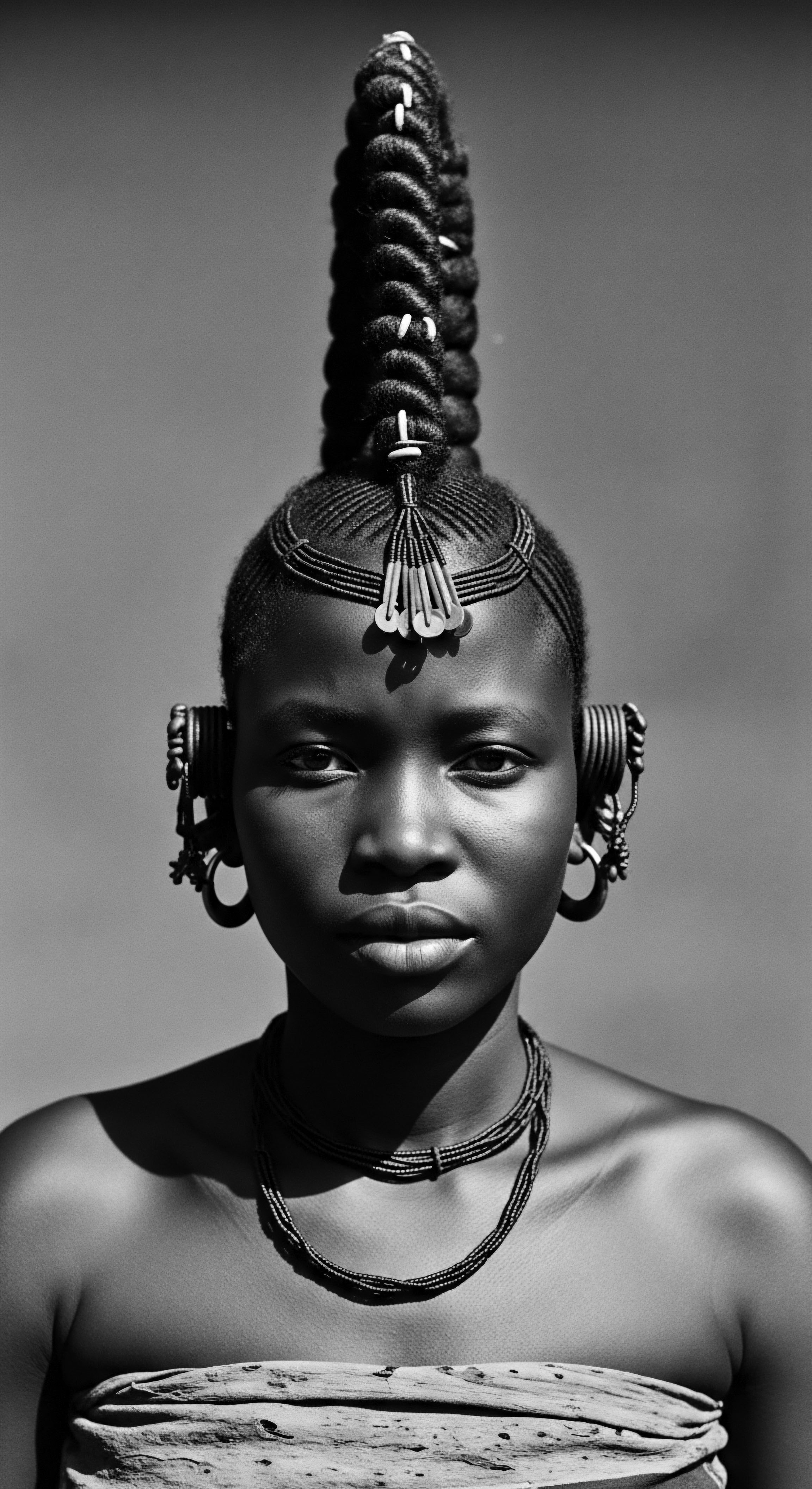
Roots
The story of textured hair, often a testament to heritage, winds through time and tradition, a vibrant thread in the tapestry of human experience. For generations, the profound understanding of our strands has been passed down, not merely as information, but as a living legacy. Within this sacred connection, henna emerges as a venerable ally, its contributions to hair strength for textured strands deeply etched into ancestral practice and validated by contemporary scientific insight. This is a journey that reaches back to elemental biology and ancient applications, a whisper from the source itself.
The structural blueprint of textured hair—its unique coil patterns, the elliptical shape of its follicles, and the inherent fragility at each curve—presents both a distinct beauty and specific care needs. These particularities shape how substances interact with the hair shaft. Henna, derived from the powdered leaves of the Lawsonia inermis plant, offers a unique interaction. Its primary active component, Lawsone, forms a chemical bond with the keratin protein that comprises the hair shaft.
This process, a molecular embrace, creates a reinforcing layer around each strand, a natural armor that enhances structural integrity. This ancient wisdom, understood through observation and generational knowledge, now finds resonance in modern trichology.

The Architecture of Textured Strands
Textured hair, whether coily, kinky, or curly, possesses a distinct anatomical profile. Unlike straight hair, which typically has a round cross-section, textured strands often exhibit an elliptical or even flat cross-section. This shape, combined with the presence of multiple twists and turns along the hair shaft, means that the cuticle layers—the outermost protective scales—do not lie as flat or uniformly. These natural variations create points of vulnerability, where the cuticle may be lifted or uneven, making textured hair inherently more susceptible to moisture loss and mechanical damage.
Understanding this inherent architecture is vital to appreciating how traditional practices, such as the application of henna, provided vital fortification. The wisdom of our ancestors recognized this delicate balance, intuitively seeking agents that could offer both resilience and beauty.
Henna’s ancient journey from desert plant to hair fortifier reflects a deep, ancestral understanding of strengthening textured hair.

Lawsone’s Ancient Embrace ❉ Strengthening from the Core
The true marvel of henna lies in its chemical interaction with hair. The molecule responsible for henna’s conditioning and coloring prowess is Lawsone (2-hydroxy-1,4-naphthoquinone). When henna paste is applied, lawsone molecules, with their affinity for protein, migrate from the paste and bind to the keratin within the hair.
This is not simply a coating; it is a permanent bond. This interaction does several things for textured strands:
- Reinforcement ❉ Lawsone molecules link with the keratin, essentially adding strength to the existing protein structure of the hair. This makes the strands more resistant to breakage, a common concern for textured hair which experiences stress at its natural bends and coils.
- Cuticle Smoothing ❉ The binding action of henna helps to smooth and lay down the often-raised cuticle scales of textured hair. This creates a smoother surface, which in turn reduces friction between individual strands, minimizing tangles and reducing the likelihood of mechanical damage from styling.
- Increased Density Perception ❉ While henna does not alter the number of hair follicles, the reinforcing layer it creates around each strand can contribute to a feeling of increased thickness and body, particularly beneficial for finer textured hair types.
This molecular embrace translates into tangible benefits, offering a shield against the daily assaults of environmental factors and styling. The wisdom of ancient communities who employed henna often predated modern chemistry, yet their observations of strengthened, more resilient hair speak volumes about this powerful plant. Its use was not random; it was a deliberate act rooted in empirical knowledge passed through generations.
Ancient Egyptians, for example, revered henna not just for its coloring attributes on hair, nails, and skin, but for its perceived medicinal and protective qualities. They understood it as a symbol of vitality and preservation. This practical understanding of henna’s strengthening qualities echoes through history, found in diverse regions across Africa, the Middle East, and South Asia, where various textured hair patterns graced communities. The plant’s adaptability to warm climates meant it became a staple in hair care rituals for various cultures, including those with hair structures often susceptible to dryness and breakage.
The profound knowledge held by ancestral communities recognized hair not as a mere adornment, but a vital part of self and cultural expression. The very methods of preparing and applying henna, often passed down through familial lines, held specific intentions for fortifying the strands, anticipating the environmental challenges unique to particular climates and lifestyles. The ancestral practices highlight how henna provided more than cosmetic alteration; it delivered structural fortitude.
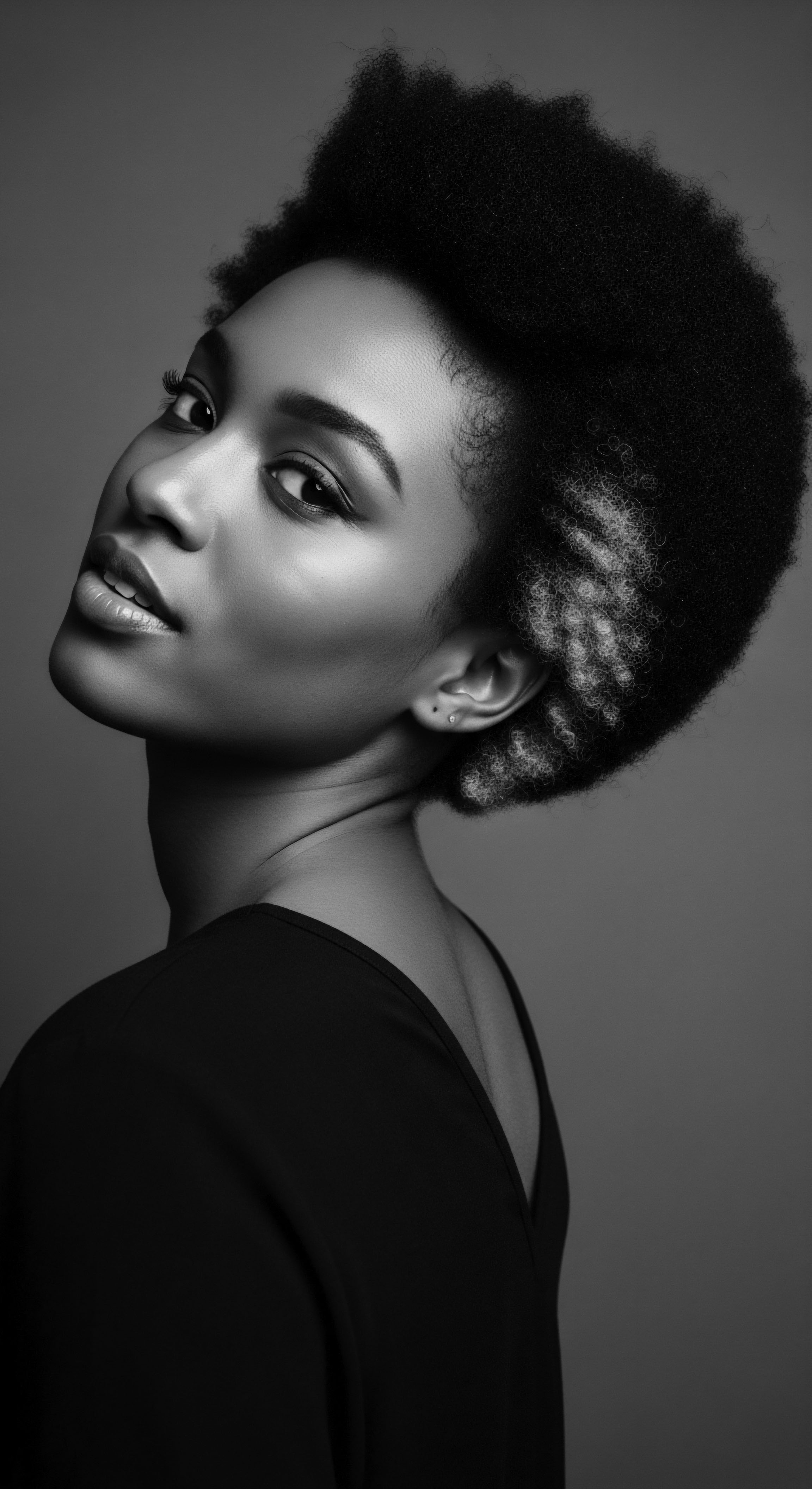
Ritual
The act of applying henna has always extended beyond a simple beauty treatment. It stands as a ceremony, a moment steeped in communal meaning and personal devotion. In the lineage of textured hair care, these rituals served as profound expressions of identity and continuity, connecting individuals to their familial and cultural pasts.
The preparation of the henna paste, the careful application, and the patient waiting as nature worked its magic were all elements of a heritage deeply cherished. This tender thread of tradition wound its way through daily routines and special occasions, defining not just how hair looked, but how it felt, and how it connected one to their people.
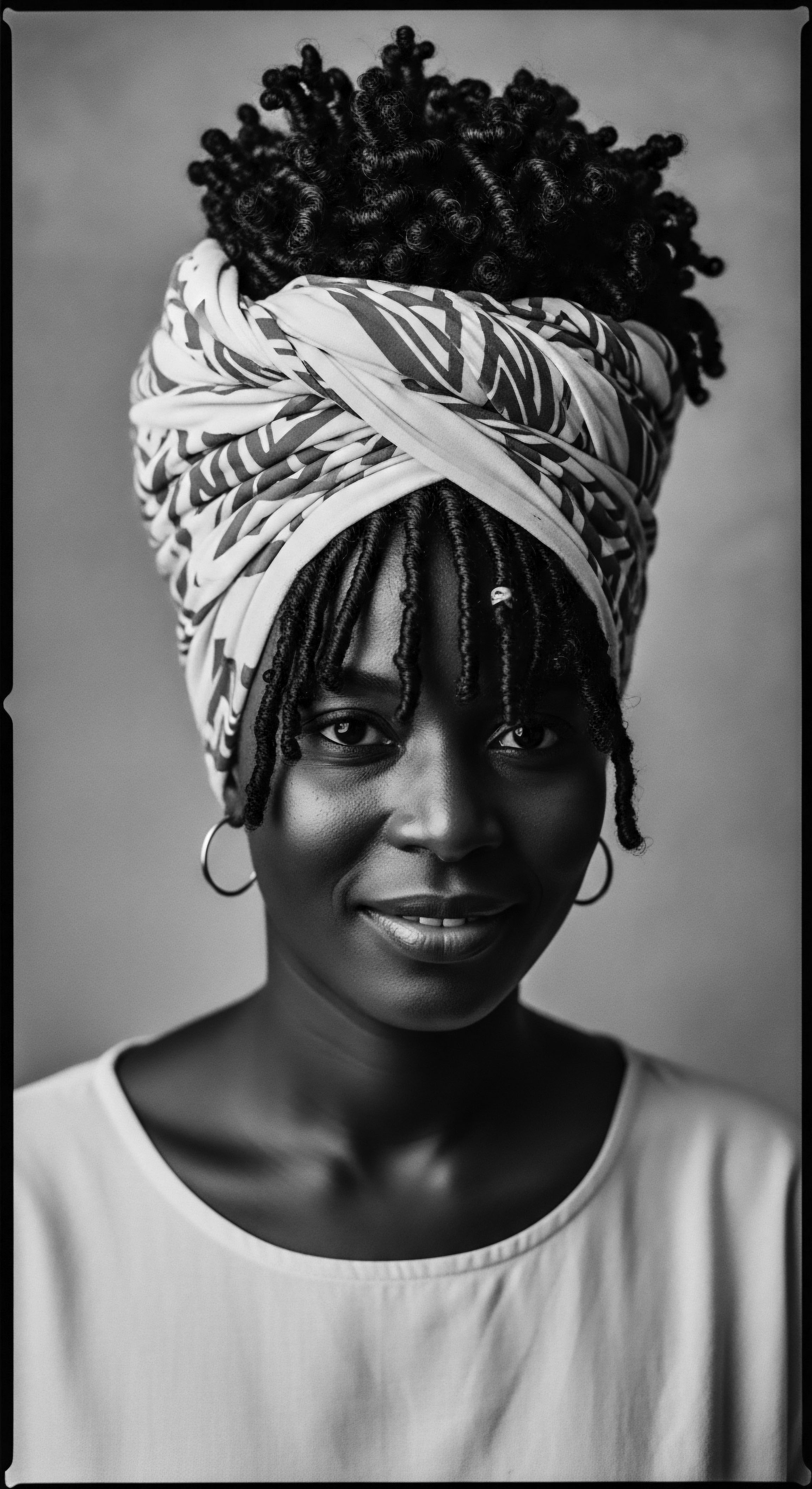
The Hands That Adorn ❉ Ancestral Henna Rituals
Across various cultures, the preparation of henna paste was an art, a communal activity often undertaken by women. Dried henna leaves were meticulously ground into a fine powder, sometimes sieved multiple times to achieve the desired consistency. This powder was then mixed with liquids, traditionally water, tea, or lemon juice, to release the lawsone dye molecule. The concoction would sit, sometimes overnight, allowing the color to deepen, a process known as dye release.
This waiting period was not idle time; it was part of the ritual, a quiet anticipation of the transformation to come. In Moroccan traditions, for instance, henna powder would be blended with warm water to create a homogeneous dough, then applied from scalp to ends. The meticulous mixing and resting ensured the paste possessed its full potency, ready to bestow its strengthening qualities.
The application itself was a skilled practice. For textured hair, known for its coils and density, thorough coating was essential to ensure even distribution of the paste and maximum benefits. This often involved sectioning the hair, applying the thick, earthy paste section by section, ensuring every strand was saturated. The hands that performed these applications, often grandmothers, mothers, or aunts, were conduits of ancestral knowledge, their movements guided by generations of experience.
These were moments of shared stories, laughter, and wisdom passed down, making the act far more than a physical application; it became a cultural transmission. Henna, whether applied for a wedding, a religious festival, or simply for routine care, carried with it the weight of history and belonging.

Strength Woven into Style ❉ Henna’s Role in Protective Practices
The strengthening properties of henna directly supported many traditional styling practices for textured hair. Textured hair, particularly those with tighter curl patterns, can be vulnerable to breakage during manipulation. By fortifying the hair shaft, henna provided a foundation of resilience, allowing for the longevity of intricate protective styles.
- Durability of Braids and Twists ❉ Styles like cornrows, Bantu knots, and various forms of braids, which have deep roots in African and diasporic communities, benefited from the increased strength henna imparted. Stronger strands were less likely to break under the tension or friction associated with these styles, meaning styles could be worn longer and with less damage.
- Reduced Shedding ❉ Henna helps to reinforce the hair’s structure, which can lead to reduced shedding, allowing individuals to better retain their hair length. This retention was particularly significant in cultures where long, healthy hair held symbolic meaning, often indicating health, prosperity, or wisdom.
- Enhanced Appearance ❉ Beyond strength, henna’s ability to smooth the cuticle layer gave textured hair a natural luster. This inherent shine, combined with the perception of increased density, made hair appear more vibrant and substantial, complementing the artistic expressions inherent in traditional styling.
In some communities, henna was used in conjunction with other traditional ingredients and techniques. For example, some North African practices incorporated hammam rituals, where the combination of heat and steam could potentially allow henna to penetrate the hair cuticle more deeply, enhancing its conditioning and strengthening effects. These layered practices underscore a sophisticated understanding of hair biology within ancestral care regimens. The ritual of care, with henna at its core, was a deliberate and knowledgeable partnership with nature, yielding not just stronger hair, but a stronger connection to heritage.
The communal ritual of henna application, often guided by elder hands, fortified textured hair while simultaneously weaving social bonds and cultural memory.
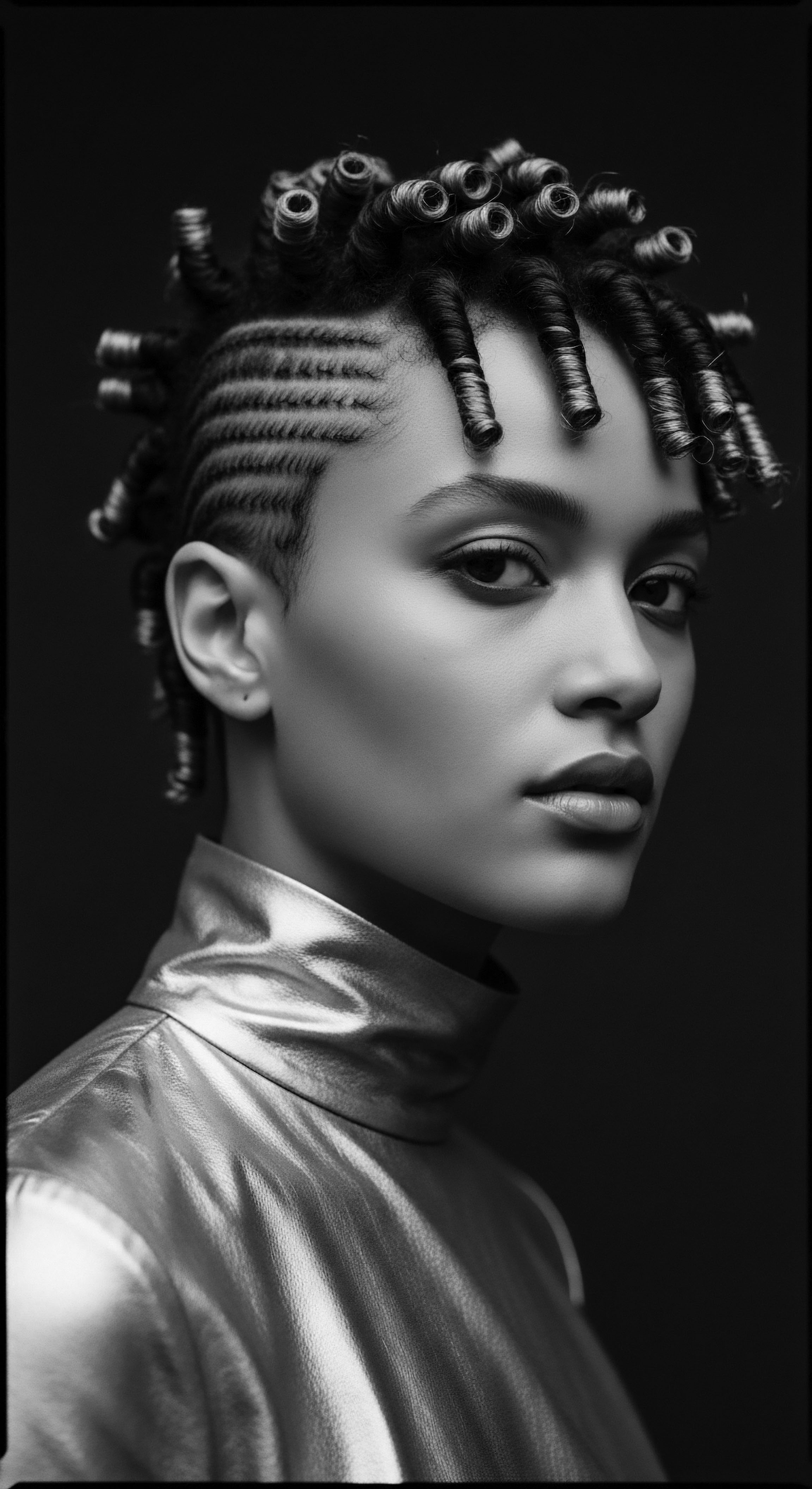
Relay
The journey of henna, from ancient botanical remedy to a subject of modern scientific inquiry, speaks to a continuity of wisdom. The ancestral understanding of its power to fortify textured strands has transcended millennia, proving its enduring value. Modern science now unpacks the precise biochemical dances that validate these long-held traditions, allowing us to grasp the ‘why’ behind the ‘how’ of its contribution to hair strength. This deeper exploration connects elemental plant biology to the lived experiences of individuals with textured hair, reinforcing the profound ancestral practices within the contemporary lexicon of hair wellness.

The Molecular Embrace ❉ Henna’s Deep Strengthening Action
The core of henna’s strengthening ability lies in its principal dye component, Lawsone. This molecule, also called hennotannic acid, possesses a remarkable affinity for the keratin protein that forms the primary building block of hair. When the henna paste is applied to hair, lawsone undergoes a Michael addition reaction, binding covalently to the free amino groups and disulfide bonds within the keratin structure. This chemical reaction is the key to its lasting impact.
Consider the hair shaft as a rope, woven from countless protein fibers. Over time, environmental stressors, chemical treatments, or even daily manipulation can fray these fibers, weakening the rope’s integrity. Lawsone acts to reinforce this structure.
By chemically bonding to the keratin, it effectively adds a new, supportive layer to each strand. This process leads to:
- Increased Tensile Strength ❉ Hair treated with henna often exhibits improved tensile strength, meaning it can withstand greater pulling force before breaking. One study, for instance, observed that hair dye containing henna increased the tensile strength of bleached hair by 53.69%. This fortification is particularly impactful for textured hair, where the natural curl pattern creates inherent weak points along the shaft, making it prone to breakage. Stronger individual strands contribute to overall hair resilience.
- Reduced Porosity ❉ Textured hair often has a naturally raised cuticle, leading to higher porosity, which means it can absorb and lose moisture quickly. The lawsone binding effectively creates a smoother, more compact cuticle layer. This external reinforcement helps to seal the cuticle, reducing excessive porosity and helping the hair retain moisture more effectively. This leads to healthier, more pliable strands that are less prone to dryness and brittleness.
- Improved Elasticity ❉ While primarily known for strengthening, the improved structural integrity imparted by henna can also contribute to better elasticity. Hair that is both strong and elastic is less likely to snap or break during styling or manipulation, a significant benefit for managing textured hair.
The precise manner in which lawsone interacts with the keratin creates a protective shield, akin to a natural protein treatment, but with a permanence that synthetic conditioners cannot replicate. This is a testament to the ingenuity of traditional practices, anticipating and addressing hair vulnerabilities with botanical wisdom.
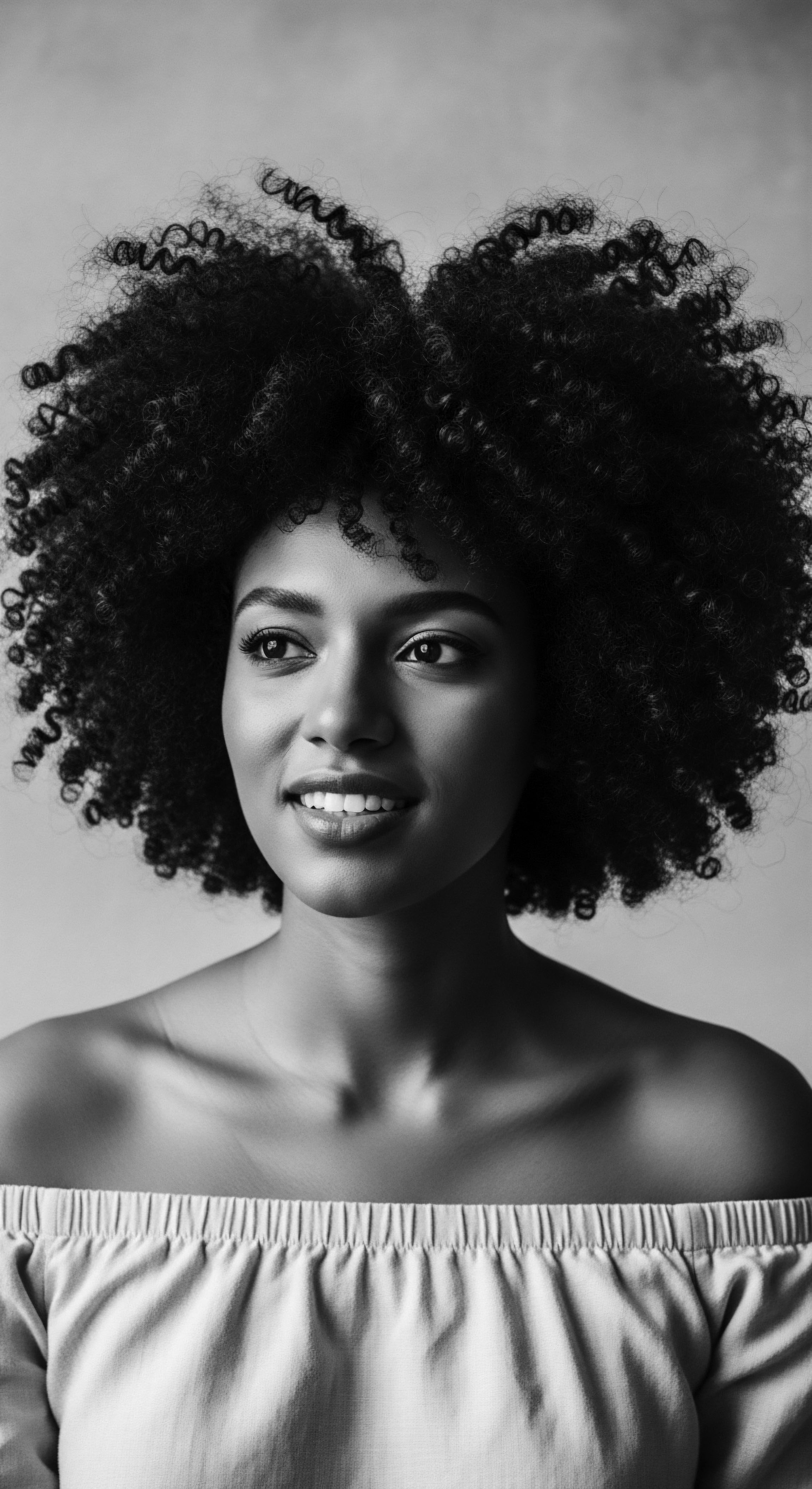
Echoes of Resilience ❉ Historical Accounts of Hair Fortification
For generations, communities across North Africa, the Middle East, and parts of Asia utilized henna, often without the lexicon of modern biochemistry, to achieve hair strength. Their observations were empirical, rooted in repeated practice and shared knowledge. In ancient Egypt, traces of henna found on mummies’ hair suggest its widespread use for cosmetic and spiritual purposes, including hair enhancement. The belief was that henna offered vitality and protection, an observation that aligns with its scientific properties of strengthening.
The continuous use of henna in Moroccan hair care, for example, highlights its enduring efficacy. Moroccan women have long turned to henna to promote hair growth, reduce scalp issues like dandruff, and maintain overall hair health, emphasizing its strengthening qualities from root to tip. This is not a fleeting trend but a centuries-old practice deeply woven into the cultural fabric, where hair is considered a significant aspect of beauty and well-being.
Lawsone, henna’s active compound, chemically bonds with keratin, profoundly increasing tensile strength and reducing porosity in textured hair.
Beyond the measurable science, the act of using henna was often imbued with spiritual significance, a practice thought to protect and purify. While modern scientific inquiry focuses on the chemical interactions, it is worth acknowledging that for historical communities, the full benefit extended to the holistic well-being of the individual, mind, body, and spirit. This layered understanding, where tangible strength intersected with cultural meaning, defines the rich heritage of henna use.

Bridging Eras ❉ Henna in a Holistic Wellness Paradigm
Henna’s place in ancestral wellness philosophies extends beyond mere hair strength. Many traditional systems viewed the body as an interconnected whole, where hair health reflected internal balance. Henna, with its documented antimicrobial and antifungal properties, contributed to scalp health by combating issues like dandruff and itchiness, thus promoting a healthy environment for hair growth. A clean, balanced scalp is a prerequisite for strong, resilient hair, particularly for textured strands which can be prone to product buildup and dryness if not properly cared for.
Consider the following table, which briefly highlights how ancestral wisdom regarding henna aligns with modern scientific understanding:
| Ancestral Observation Hair feels stronger, less prone to breaking. |
| Modern Scientific Mechanism Lawsone binds to keratin, increasing hair's tensile strength and reinforcing the protein structure. |
| Ancestral Observation Hair appears thicker and more lustrous. |
| Modern Scientific Mechanism Lawsone deposits a reinforcing layer, smoothing the cuticle and reducing porosity, reflecting light. |
| Ancestral Observation Scalp feels healthier, less irritation. |
| Modern Scientific Mechanism Henna exhibits antimicrobial and antifungal properties, helping to balance scalp microbiome. |
| Ancestral Observation The enduring efficacy of henna, observed through generations, now finds clear explanation in biochemical interactions. |
The natural approach of henna also stands in contrast to many synthetic chemical treatments, which can often strip hair of its natural oils or cause damage over time. The ancestral reliance on natural botanicals like henna speaks to a profound respect for the earth and its offerings, seeking remedies that work in harmony with the body’s intrinsic processes. This approach to care, inherited through generations, prioritizes gentle yet potent solutions for maintaining hair vitality. The story of henna and its contributions to hair strength for textured strands is a vibrant testament to an unbound helix—a living, growing legacy.

Reflection
As we close this chapter on henna’s enduring gifts, its story remains a profound meditation on textured hair, its heritage, and its care. We have seen how a humble plant, nurtured in sun-drenched lands, became a cornerstone of ancestral beauty rituals, its wisdom passed through the gentle caress of hands preparing paste, through shared laughter during application, and through the quiet observation of its transformative power. The strengthening that henna imparts to textured strands transcends mere cosmetic effect. It speaks to a deeper resilience, mirroring the enduring spirit of communities who have celebrated their coils, kinks, and curls across centuries.
This plant medicine, with its lawsone molecule binding steadfastly to keratin, is a tangible link to a collective past. It reminds us that knowledge of self, of body, and of earth, is often held within the very traditions we inherit. The ancient practices that understood henna’s ability to fortify, to bring shine, to protect the scalp—these were not accidental; they were acts of reverence and understanding, born of generations living in intimate connection with their natural world.
The continuity of these rituals, from the hammams of Morocco to the hair care practices of the African diaspora, stands as a vibrant, living archive. It underscores the profound truth that our heritage offers not just a glimpse into history, but a guiding light for our present and future care.
The unbound helix of textured hair, with its unique story etched in every twist and turn, finds a powerful ally in henna. This ancestral wisdom continues to echo, a resonant call to honor the legacy of our strands, to care for them with intention, and to carry forward the rich tapestry of traditions that define who we are.

References
- Alassadi, F. (2023). African Henna ❉ History, Cosmetic Uses, and Modern Applications. NATURAL POLAND.
- Humphrey-Newell, D. M. (1998). Henna ❉ Uses of It in the Middle East and North Africa. In D. M. Humphrey-Newell (Ed.), The Art and Science of Traditional Henna.
- Nail IB. (n.d.). Investigation on the effect of natural & synthetic shampoos on the tensile strength of hair | Biology HL’s Sample Internal Assessment. Nail IB.
- OpenStax. (2022). 16.1 Anthropology of the Arts.
- Park, K. E. (2018). A Study on the Mechanical Change of Emulsion-Treated Hair by Color. Korea Science.
- Reshma Beauty. (2024). The History and Cultural Significance of Henna in Hair Coloring.
- ResearchGate. (2020). Antimicrobial Activity and Isolation of Lawsone from Lawsonia inermis using Column Chromatography.
- Roy, S. & Singh, J. (2024). REVIEW ON Lawsonia inermis LINN. IJCRT, 12(10).
- Sellox Blog. (2021). Ancient African Hair Growth Secrets For Healthy Hair.
- The Henna Page. (n.d.). Henna for hair growth ❉ The secret natural hair mask for long natural hair. Type 4 On a Mission.
- VisitRuralMorocco.com. (n.d.). Henna in Morocco ❉ A Botanical Beauty.
- Zahra, A. (2023). 12 Unbelievable Henna Health Benefits for Hair. itselixir.
- Zenamoroccan. (n.d.). Moroccan henna for the hair. Global.
